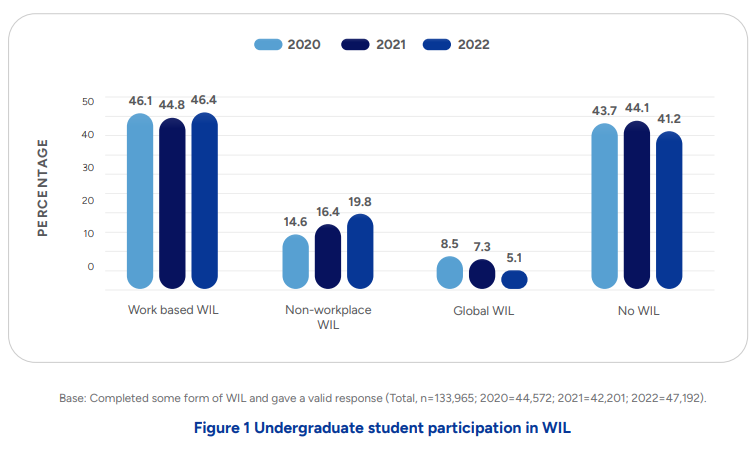New research has highlighted the clear benefits of Work Integrated Learning but has found disadvantaged students continue to miss out.
The Australian Collaborative Education Network has released two new reports on student participation and graduate outcomes associated with Work Integrated Learning. ACEN’s reports compare data from the Graduate Outcomes Survey from 2020 to 2022.
WIL has clear benefits for students from disadvantaged groups. Work-based WIL was associated with higher rates of full-time employment among regional and Indigenous students as well as those with a disability and low socio-economic status.
Despite this, Indigenous, regional and low-SES students as well as those with a disability are less likely to take part in WIL than other students as seen in the following statistics (data based on undergraduate participation in work-based WIL in 2022):
- 31 per cent of Indigenous students took part in WIL compared to 34 per cent of non-Indigenous students
- 32 per cent of regional students took part in WIL compared to 36 per cent of non-regional students
- 34 per cent of low-SES students took part in WIL compared to 35 per cent and 36 per cent of medium and high-SES students respectively
- 33 percent of students with a disability took part in WIL compared to 36 per cent without a disability.
WIL and employment outcomes
The research shows a strong association between WIL and full-time employment in the general student population. In 2022, 81 per cent of undergraduate students who took part in WIL were in full-time employment compared to 75 per cent of those who did not engage in some form of WIL.
Those who took part in WIL were also less likely to report feeling overqualified in their current role and reported higher levels of preparedness for work.
Who is doing WIL?
In 2022, participation in work-based WIL was strongest among undergraduates at 46 per cent compared to postgraduate by coursework and research students at 37 per cent and 15 per cent respectively.

In 2022, only 14 per cent of undergraduates studying humanities, culture and social science-related degrees took part in work-based WIL compared to 16 per cent of those studying science and mathematics-related degrees.
For more information you can read both of the reports here.
